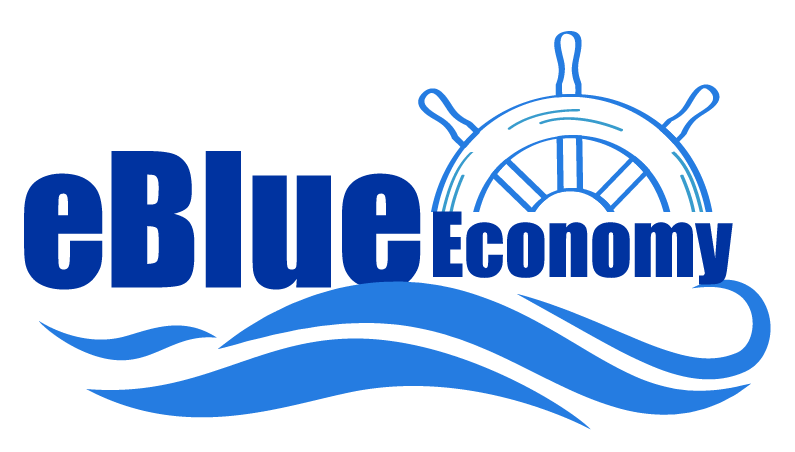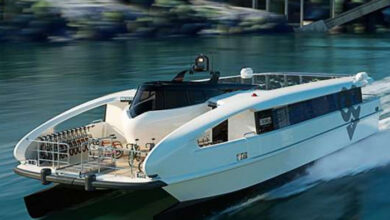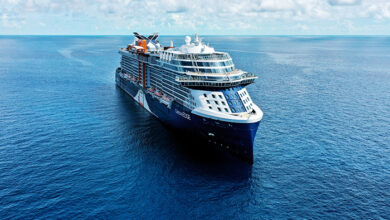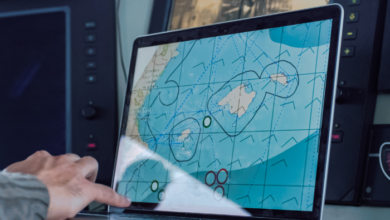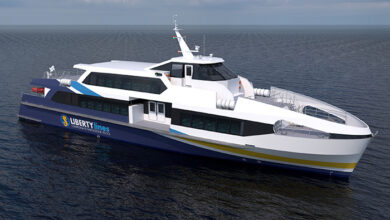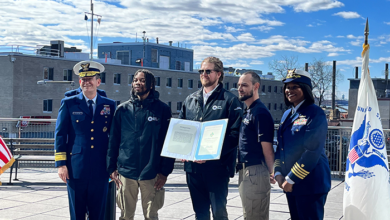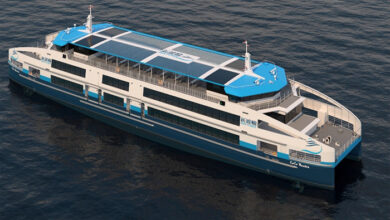Marine environment ; Innovative Ways We’re Cleaning Up the Ocean and How You Can Help
Eight million metric tons of plastic is found in seas and oceans every year


Over the last few decades, plastic has become an essential part of our everyday lives. From grocery bags to toys and bottles, plastic is one of the most used materials to date. However, this material is unfortunately causing a great deal of harm to ocean life too.
A whopping 8 million metric tons of plastic is found in seas and oceans every year, which is bad news for marine species. Plastic became a popular material because of its ease of manufacture and durability, but when this trash is disposed of and finds its way into the ocean, some products and materials can take up to 600 years to break down, posing a great risk to our oceans and their inhabitants in the process.
What is harming our oceans?
According to the National Oceanic and Atmospheric Administration(NOAA), the top 10 marine debris items include:
- Cigarettes and cigarette filters
- Plastic bags
- Food wrappers and containers
- Caps and lids
- Plastic beverage bottles
- Eating utensils
- Glass beverage bottles
- Beverage cans
- Straws and stirrers
- Paper bagsWhat is even more frightening is that the items can remain in the environment for long periods before they even begin to break down. For example, cigarette butts can take up to 10 years to biodegrade while plastic bottles can take 450 years.

Innovative ways we’re combating ocean trash
By 2050, it is predicted that we will have more plastic in our oceans than fish. While this problem isn’t going away any time soon, scientists have been working to create solutions that can slowly start to clean up our oceans and put an end to this major issue. Here are just some of the techniques being used.
System 001
System 001 is a 62-mile long barrier that targets plastic debris, micro plastics and ghost nets from the gyres, also known as the Great Pacific Garbage Patch. Created by Boyan Slat, CEO of The Ocean Cleanup, this innovative design cleans up 80,000 tons of garbage located between Hawaii and California
This unit has a slow-moving design that moves with the ocean’s currents to collect ocean plastic and contain debris. Once full, the accumulated plastic will be removed. Scientists and experts have been closely monitoring System 001 since its first launch, confirming there was no interference with marine life. The goal is to protect the natural environment by capturing the plastic before it has time to degrade into microplastics.
Seabin V5
Seabin V5, created by the Seabin Project, is aimed at gathering floating trash located in areas with calm water, like marinas and harbors. Made from recyclable materials, this vacuum-like design pumps water into the filter bag located inside the device. Water is then pumped back into the surrounding area, leaving the trash trapped inside. Not only is this device able to capture harmful plastic and debris, but it also absorbs harmful oils from the water.

Seabin V5 can clean up 44 pounds of debris daily and 1.4 tons of debris per year. Since Seabins are located in marinas with high pollution, sea life is minimal. Scientists have been working to engineer a bag material that efficiently captures even the smallest plastics from the sea. The team is continuously adapting to new methods to improve this material to continue to remove macro plastics, microfiber materials and oil and fuel pollutants from the oceans.
Mr. Trash Wheel
Mr. Trash Wheel, created by Clearwater Mills, LLC, is an innovative water wheel that captures trash in rivers, streams and harbors, and then turns it into electricity. It can clean up 38,000 pounds of trash daily and has prevented 1.6 million pounds of debris from entering the ocean thus far!
This technology is aimed at collecting debris and oil slicks. It uses a conveyor belt powered by solar panels to move the trash into a floating barge. When the trash reaches the barge, it is then converted into electricity. Because of its slow movement, any wildlife that comes near the machine has plenty of time to move out of harm’s way.
WasteShark
WasteShark was created by RanMarine Technology in 2018, with a design inspired by the whale shark. WasteShark is a water drone with the goal of collecting debris before the winds, tides and currents carry it out into the ocean. It floats along the surface of the water collecting floating debris like plastic and bio-waste.
Its technology enables you to pre plan a route to ensure it covers the most concerning areas. It can also be operated using manual steering, as with any traditional drone. An added feature of WasteShark is its ability to read and send information regarding water qualities, like pH levels and salinity.
FRED
The San Diego non-profit organization Clear Blue Sea, partnered with student interns from various San Diego universities to create the prototype FRED, which stands for Floating Robot Eliminating Debris. Currently set to be completed in 2023, this technology vacuums and collects harmful debris from the ocean’s surface, while running on renewable energy. The flaps in the front of the device are able to collect large debris and transport them into a collection bin using a conveyer belt. FRED’s slow speed and built in sensors are able to keep marine life away during the collection.
Magnetic Coils
A study conducted by scientist Xiaoguang Duag found that nanotechnology could be a solution to our plastic problem. Duag and a team of scientists have created magnetic coils that will be used to break down microplastics using a chemical reaction. These tiny magnetic coils are coated with nitrogen and manganese, causing a chemical reaction with oxygen molecules. This reaction can break down microplastics, turning them into environmentally friendly salt compounds, carbon dioxide and water.
This innovation is still being tested but is projected to clean up 100% of microplastics in harbors and marinas. Toxicity tests done during this study found that the degraded micro-plastics were not harmful to marine life and can actually act as a carbon source for algal growth.
What can you do to help save our oceans?
Although these innovative solutions are aiding our ocean cleanups, we can all do our part to help. Here are some ways you can do your part.
Switch to plastic-free alternatives
Consider eliminating your use of single-use plastic and adopting eco-friendly and sustainable alternatives. Simple things like using reusable grocery bags, glass coffee cups and reusable straws can make a difference long-term. It’s important to note that while these small changes can reduce plastic waste, these alternatives also carry their own footprint.
Avoid ocean-harming products
While plastic is the leading culprit causing harm to our seas, there are many other harmful products we use daily that contribute to ocean pollution. Many cosmetic products have harmful and toxic chemicals that cause damage to our oceans. For example, marine-toxic chemicals, like oxybenzone and octinoxate, are found in most sunscreens. Any ingredients affecting our marine life can be washed off when swimming in the sea or during a shower and passed out into sewage, eventually reaching the ocean. Do your research to discover what ingredients to avoid. There are many reef-safe cosmetic products available, so next time you go shopping, make sure to check the ingredients list.
Get out and vote
Making a change in our communities is an effective way to start pushing for global change regarding this issue. Elect public officials and vote on policies that support and protect marine life. Educate yourself and stay up to date so you can make an informed decision and exercise your right to vote.
Reduce your carbon footprint
The amount of carbon dioxide being emitted into the atmosphere has increased over time and has made our oceans more acidic. Coral is greatly affected by the acidity of the water and is consequently unable to thrive. To reduce your carbon footprint, you can try simple things like riding a bike or walking instead of using a car or avoid using your thermostat during cold months.
Pick up your trash
It is astonishing that people continue to leave their trash behind. With large crowds coming to the beach, do your part by making sure you collect all of your trash before you leave. Maybe even pick up the trash left behind by those around you. Although it’s not your responsibility, picking up trash left by others is a small tactic that has a great impact. If you live near the beach, consider gathering members of your community together to organize a beach clean-up.
With today’s current technology and a collective effort to make more sustainable choices, we can all come together to help our ocean life. Read the infographic below to discover other innovative ways scientists and inventors are helping to clean up ocean pollution.

